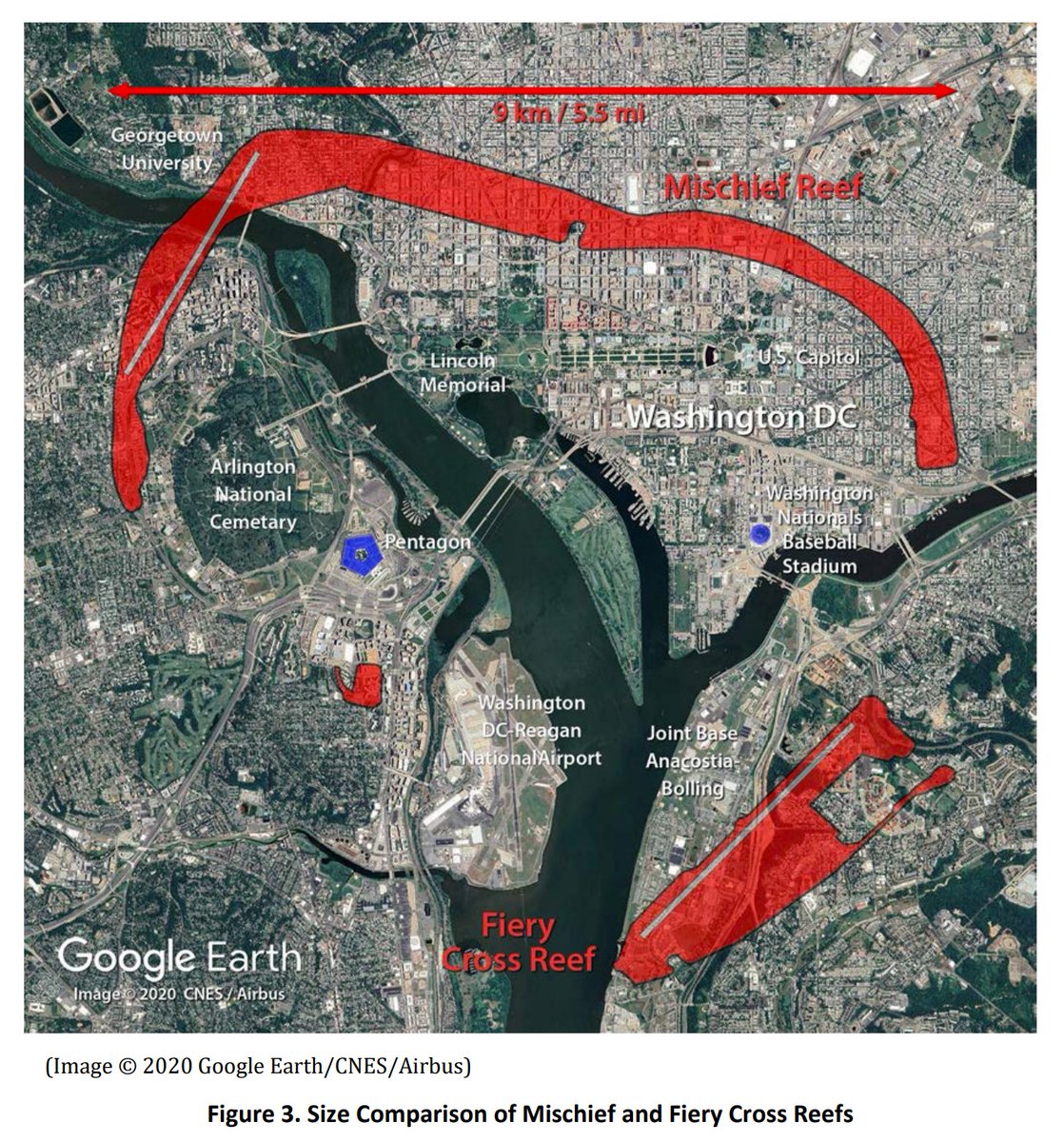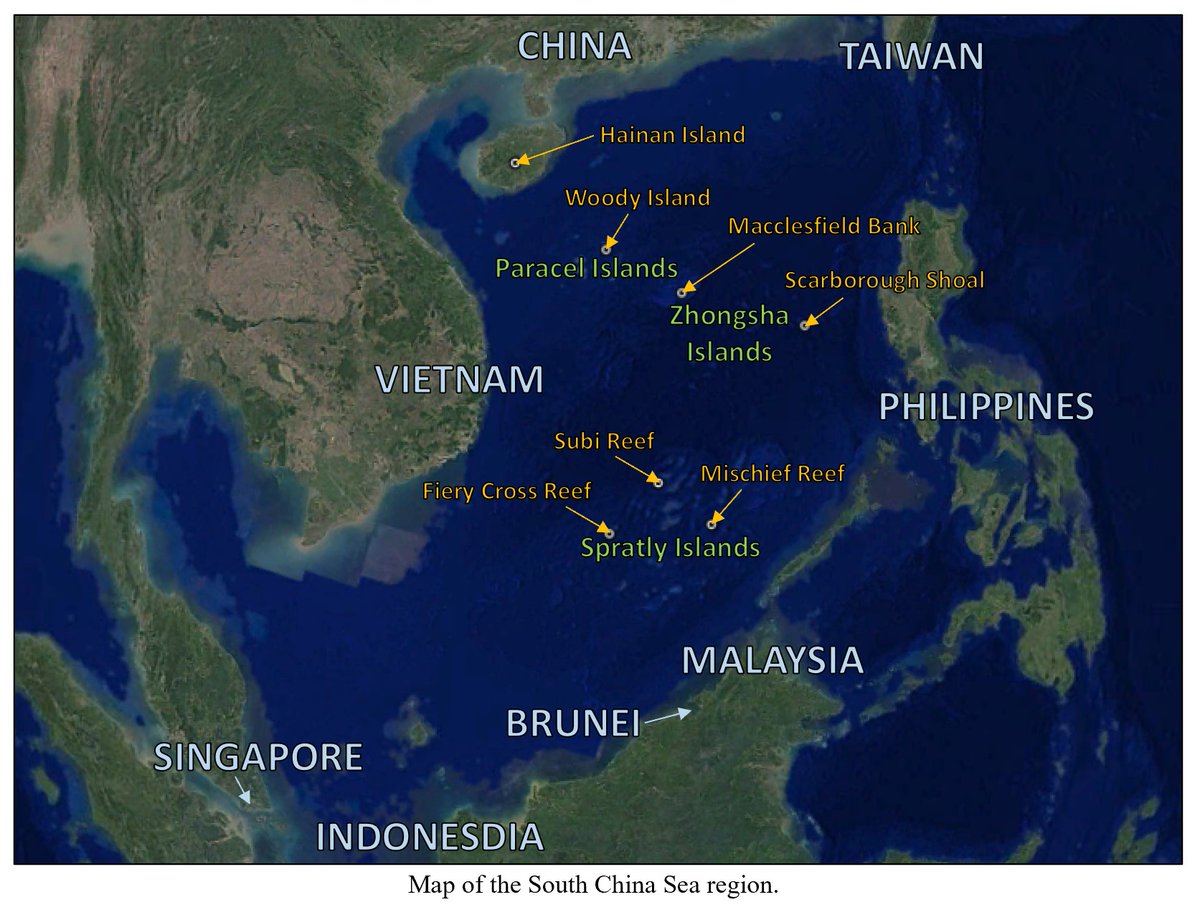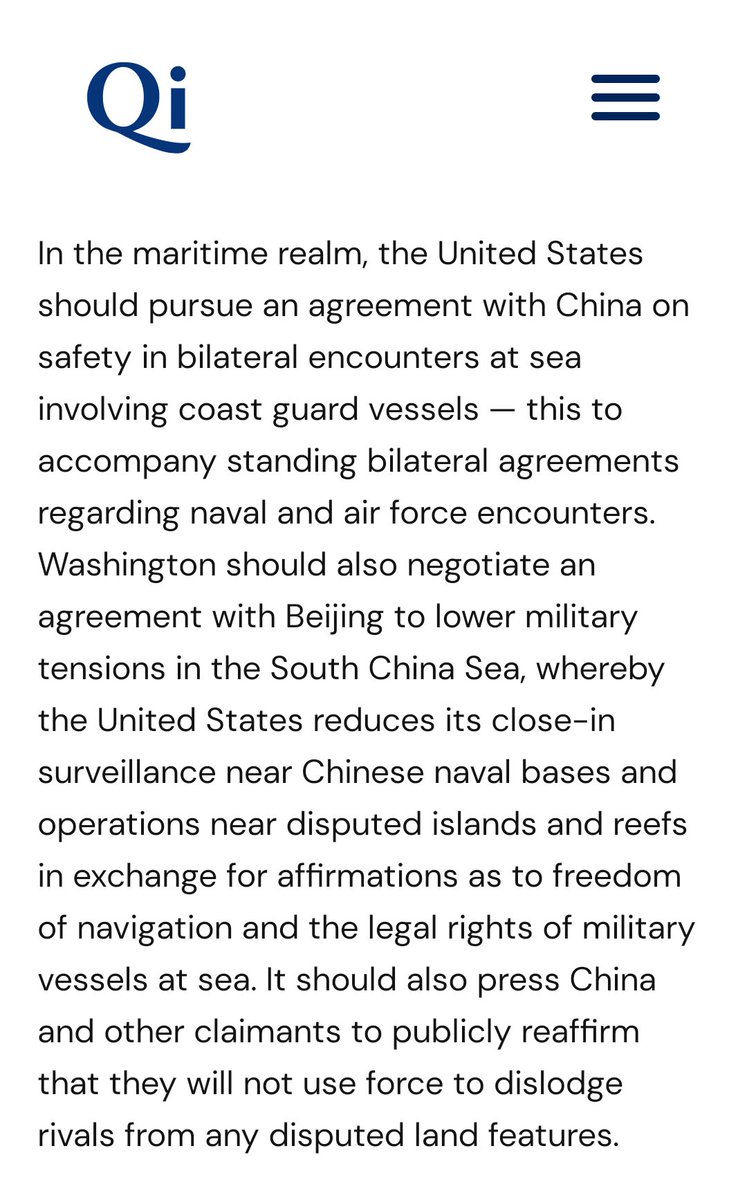
This analysis of the dynamics at play in the South China Sea is dangerously misleading. A few reasons why: (1/)
https://twitter.com/resplinodell/status/1349784771476520961
(2/) First, we need to make a distinction between China's massive reclamation campaign and the minor reclamation activities of other claimants. China is the only claimant that has built artificial islands the size of Washington DC. 

(3/) Moreover, the US is not imposing "sanctions" on Chinese entities. It is imposing visa restrictions and export restrictions, which are not the same thing as sanctions. This might seem pedantic, but the distinction is important (more on this later).
(4/) Importantly, the US is not putting these restrictions on China solely because of land reclamation. The measures target entities involved in "large-scale reclamation, construction, or militarization" as well "the PRC’s use of coercion against Southeast Asian claimants."
(5/) While China's reclamation campaign is finished, China's construction, militarization, and use of coercion continues unabated. In fact, as I show in my recent @ChinaMaritime report, China is still investing quite heavily in expanding these activities. digital-commons.usnwc.edu/cmsi-maritime-…
(6/) Likewise, thanks to J. Michael Dahm's excellent "South China Sea Military Capabilities Series" with JHUAPL, we know the true extent of China's militarization in the Spratly Islands. jhuapl.edu/NewsPublicatio…
(7/) China's land reclamation was significant, but the whole point of this reclamation was to create huge military bases to support continuous PLAN/CCG/PAFMM ops and host counter-stealth radar, SAMs, fighter aircraft, SIGINT, air and surface radar, EW, and other capabilities.
(8/) Because China is still carrying out construction, militarizing its features, and coercing other claimants, I would say that we are pretty justified in responding, especially with export restrictions. We don't want US companies or US tech aiding China in the South China Sea.
(9/) All this being said, I do agree with others like @GregPoling who have pointed out that these new measures against CNOOC are not going to do much.
https://twitter.com/GregPoling/status/1349771973681930240?s=20
(10/) Rather than punishing entities for past misdeeds, we need to focus on the entities that are currently at the forefront of China's effort to control the South China Sea, like the hundreds of companies registered or otherwise active in Sansha City. amti.csis.org/sansha-city-an…
• • •
Missing some Tweet in this thread? You can try to
force a refresh








